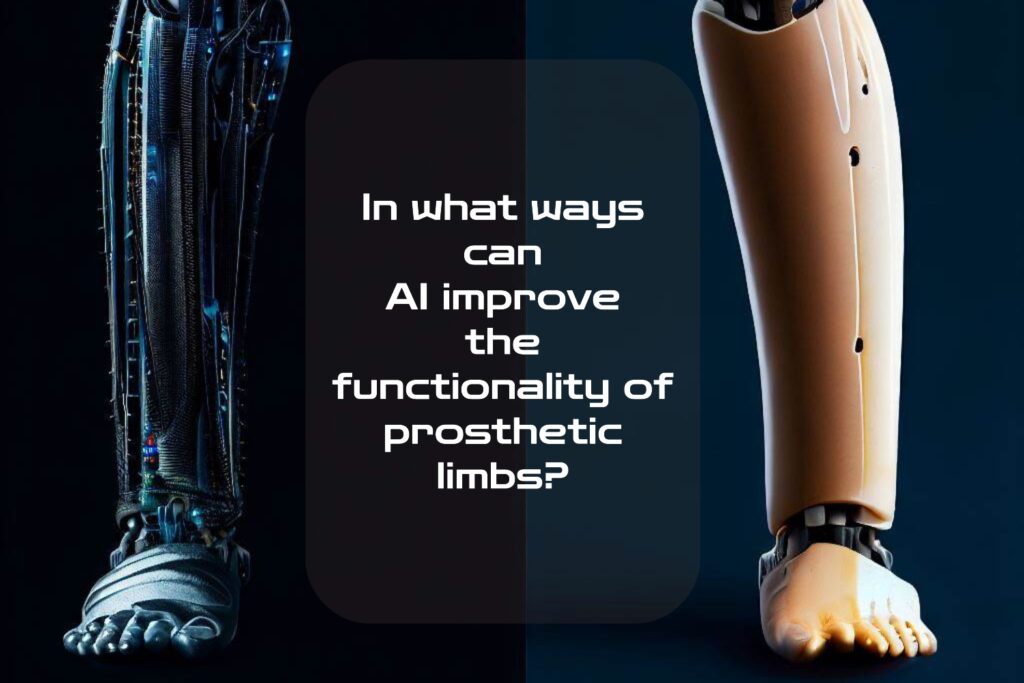Unlocking the Potential of Prosthetic Limbs with AI
The Limitations of Prosthetic Limbs and the Importance of Functionality for Amputees
Authors Note:
I found putting this article together to be absolutely fascinating – and more than a little heartening.
However, most images on this site are A.I.-generated, and I found myself constantly blocked from generating images within this niche subject. I apologise for the denseness of the text, but wholly encourage you to read on anyway. CM. Author.
Prosthetic limbs have come a long way in recent years and can replace lost limbs to varying degrees of success. However, traditional prosthetics still have their limitations that restrict amputees from regaining complete functionality.
Traditional prosthetics are typically passive devices that only move in response to muscular signals transmitted by electrodes placed on the skin. This results in limited mobility and functionality for amputees who rely solely on their muscle movements to control the prosthetic limb.
They are often heavy and difficult to maneuver, requiring significant effort from the user to operate. This is where AI comes in – artificial intelligence can significantly improve the functionality and mobility of these devices, giving amputees a whole new level of independence and freedom they never thought possible.
The Importance of Improved Functionality for Amputees
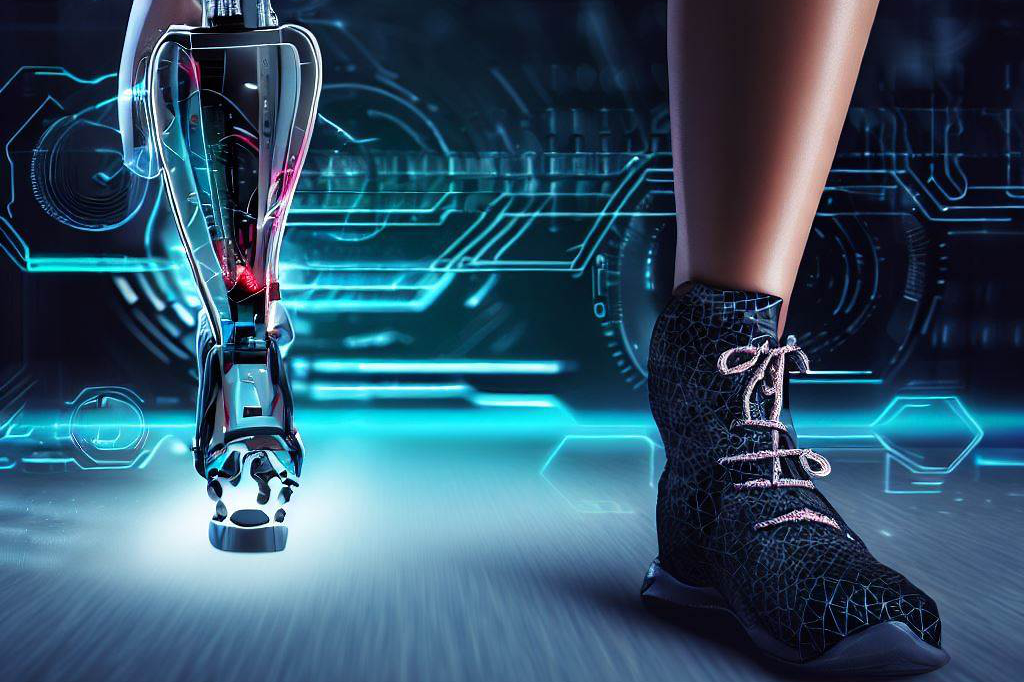
The loss of a limb is an extremely traumatic experience that can affect all aspects of a person’s life – physically, emotionally, socially, and financially. The ability to regain some level of independence through improved limb functionality can provide much-needed relief for individuals who have suffered such a loss. A functional prosthetic limb allows amputees to participate more fully in their daily lives by enabling them to perform essential tasks like reaching objects overhead or carrying groceries home without assistance.
It also enables them to return more easily to the workforce if they choose. Improved limb functionality ultimately helps amputees regain confidence and independence, which leads them towards better mental health outcomes overall.
How AI can improve prosthetic limbs
Integration of sensors for better control and feedback
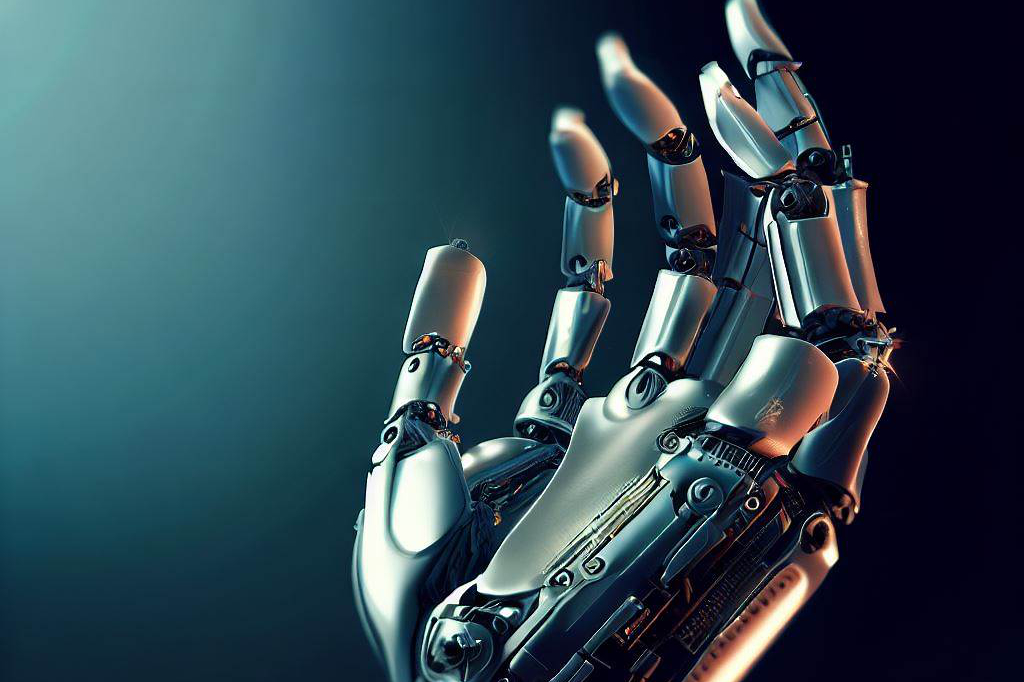
Prosthetic limbs can be difficult to control due to the lack of sensory input from the amputated limb. However, by integrating sensors into the prosthetic limb, AI can provide users with better control and feedback. These sensors can detect muscle movement, pressure, and even temperature changes in the residual limb.
This information is then used by the AI to provide real-time adjustments to the prosthetic’s movements. Sensors also allow for improved safety features.
For example, if a sensor detects too much pressure on the prosthetic foot while walking on uneven terrain, it can adjust the foot’s angle to prevent tripping or falling. Additionally, sensors can detect if a user is attempting to pick up a heavy object and adjust the strength of the grip accordingly.
Machine learning algorithms for personalized movements and adjustments
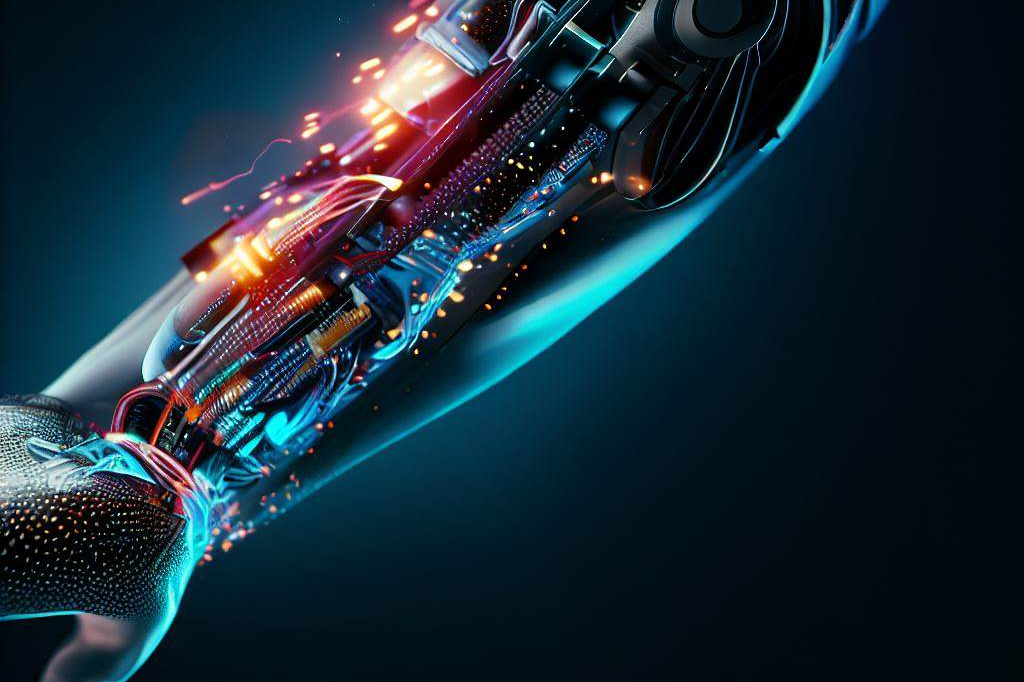
AI’s machine learning capabilities allow it to adapt and learn from individual user inputs over time. By analyzing data about how a user interacts with their prosthetic limb, machine learning algorithms can create personalized movements and adjustments that match their unique needs. For example, if a user performs a particular motion frequently with their prosthetic arm but struggles with accuracy or precision, machine learning algorithms might analyze data about their body mechanics during that motion and make small adjustments to improve its effectiveness.
Real-time data analysis for improved performance
Real-time data analysis is another way that AI improves functionality in prosthetics. By analyzing data from multiple sensors in real time as users move around throughout their day, AI systems can precisely model how each movement affects different parts of their body.
This information is then used to optimize performance by making real-time adjustments based on factors like weight distribution or muscle fatigue. In some cases, this might mean adjusting things like joint angles mid-stride to make walking more efficient or easier.
Predictive maintenance to reduce downtime
Predictive maintenance is an exciting new way that AI can improve prosthetic limb functionality. By constantly analyzing usage data and detecting signs of wear and tear, AI systems can predict when a prosthetic component is likely to fail and schedule routine maintenance before it becomes a problem.
This not only reduces the amount of downtime for patients due to repairs but also ensures that their prosthetic limbs remain in optimal condition for longer periods of time. Predictive maintenance also means that fewer malfunctions occur unexpectedly, which can be critical for users whose mobility depends on their prosthetics.
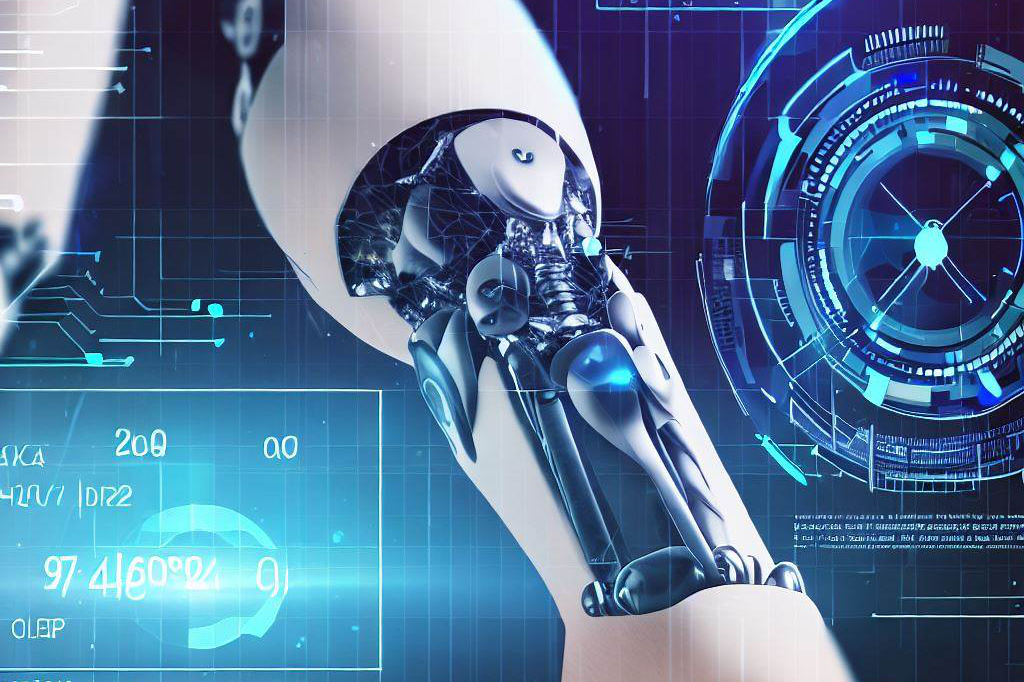
Sensor Integration: The Key to Prosthetic Limb Functionality
When it comes to prosthetic limbs, one of the biggest challenges is providing amputees with precise and natural movements. That’s where sensors come in.
A variety of sensors can be integrated into prosthetic limbs to provide feedback and control over movements. These sensors can detect everything from pressure and temperature to muscle movements and electrical signals.
Types of Sensors Used in Prosthetics
The most commonly used sensor in prosthetics is the myoelectric sensor, which detects electrical signals produced by muscles. These signals are used to control the movement of the prosthesis, allowing amputees to perform a wide range of motions, from grasping objects to walking up stairs.
Other types of sensors that can be integrated into prosthetics include
- force sensors, which measure pressure applied by an object or surface,
- and temperature sensors, which provide feedback on temperature changes that could cause discomfort or damage.
Benefits of Sensor Integration in Prosthetics
The benefits of sensor integration in prosthetics are numerous. By providing more accurate feedback on movement and pressure, sensors can help improve the overall functionality and comfort of the prosthesis. This can lead to better mobility for amputees and a higher level of independence.
In addition, sensor integration allows for more personalized adjustments based on individual needs. By analyzing data from multiple sensors in real-time, it’s possible to make precise modifications that improve both comfort and function.
Examples of Sensor-Integrated Prosthetics
One example of a sensor-integrated prosthetic limb is the i-limb quantum hand by Touch Bionics. This device features multiple myoelectric sensors that allow users to control each finger individually using muscle signals from their residual limb.
Another example is Ottobock’s Genium X3 knee joint prosthesis, which features sensors that detect changes in pressure and movement to allow for a more natural gait. This prosthesis also includes a microprocessor that analyzes data from the sensors in real-time to adjust the joint’s resistance and improve stability while walking.
Overall, sensor integration is a crucial component of improving prosthetic limb functionality through AI. By providing more accurate feedback and control over movements, sensors can make a real difference in the lives of amputees.
Machine Learning Algorithms
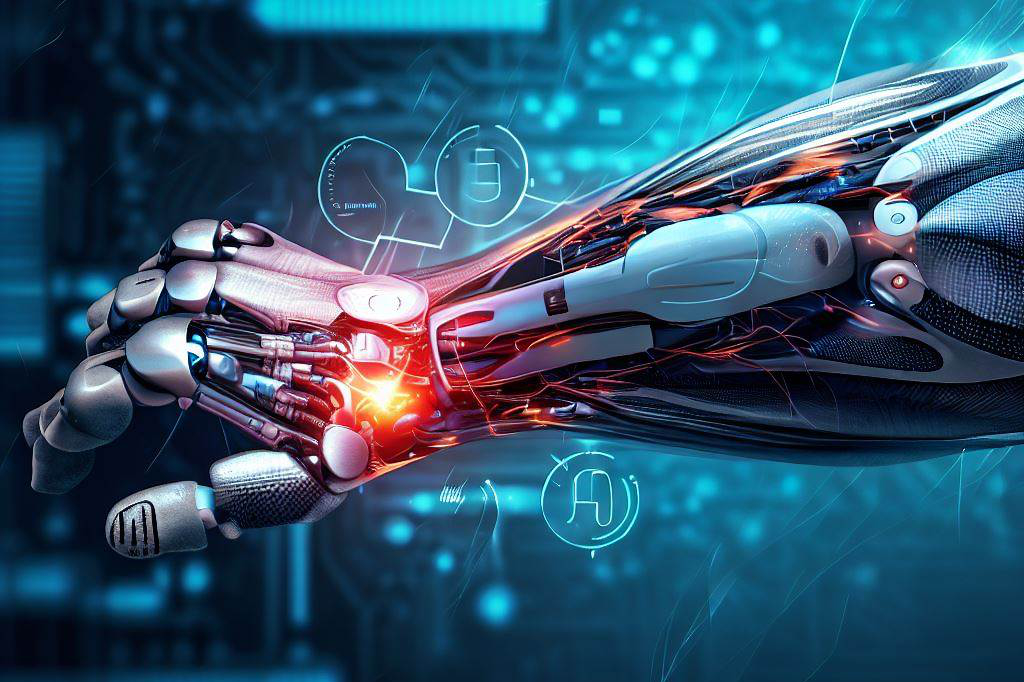
One of the most exciting ways that AI can improve prosthetic limbs is through the use of machine learning algorithms. Machine learning is a type of AI that allows computers to learn from data and improve over time without being explicitly programmed. In prosthetics, this means that algorithms can be trained on a particular individual’s movements and preferences to create more personalized movements and adjustments.
The Application of Machine Learning in Prosthetics
Machine learning has several applications in prosthetics, including improving the accuracy of sensor readings, anticipating the user’s intentions, and creating personalized control systems. By analyzing data collected from sensors on the prosthetic limb, machine learning algorithms can identify patterns in movement that may indicate a particular action or intention. These patterns can then be used to predict what movement the user intends to make before they actually make it.
The Benefits of Personalized Movements and Adjustments Through Machine Learning
One major benefit of machine learning in prosthetics is its ability to create more personalized movements and adjustments based on an individual’s unique needs. By analyzing data about a user’s movements and preferences, machine learning algorithms can adjust the prosthetic limb’s control system to better meet their needs.
For example, if an amputee has difficulty making certain types of movements with their current prosthesis, such as grasping small objects or lifting heavy weights, a machine learning algorithm could analyze data about their muscle activity or sensor readings during those activities and adjust the control system accordingly. This could help them perform these tasks with greater ease and accuracy.
Examples of Machine Learning Integrated Prosthetics
One example of a machine learning integrated prosthetic limb is the Bebionic hand by Ottobock Healthcare. This prosthesis uses machine learning algorithms to anticipate users’ intended actions based on patterns in muscle activity detected by sensors located within the hand. This allows for more natural and intuitive control of the prosthetic limb.
Another example is the DEKA LUKE arm, which uses machine learning to allow users to perform complex movements with greater ease and accuracy. The LUKE arm features multiple sensors that collect data about the user’s muscle activity, which is then analyzed by a machine learning algorithm to predict their intended actions and adjust the prosthesis accordingly.
Overall, machine learning has tremendous potential for improving the functionality of prosthetic limbs through personalized movements and better control systems. As this technology continues to advance, we can expect prosthetic limbs to become even more intuitive and effective at restoring mobility and independence for amputees.
The Power of Real-Time Data Analysis in Prosthetics
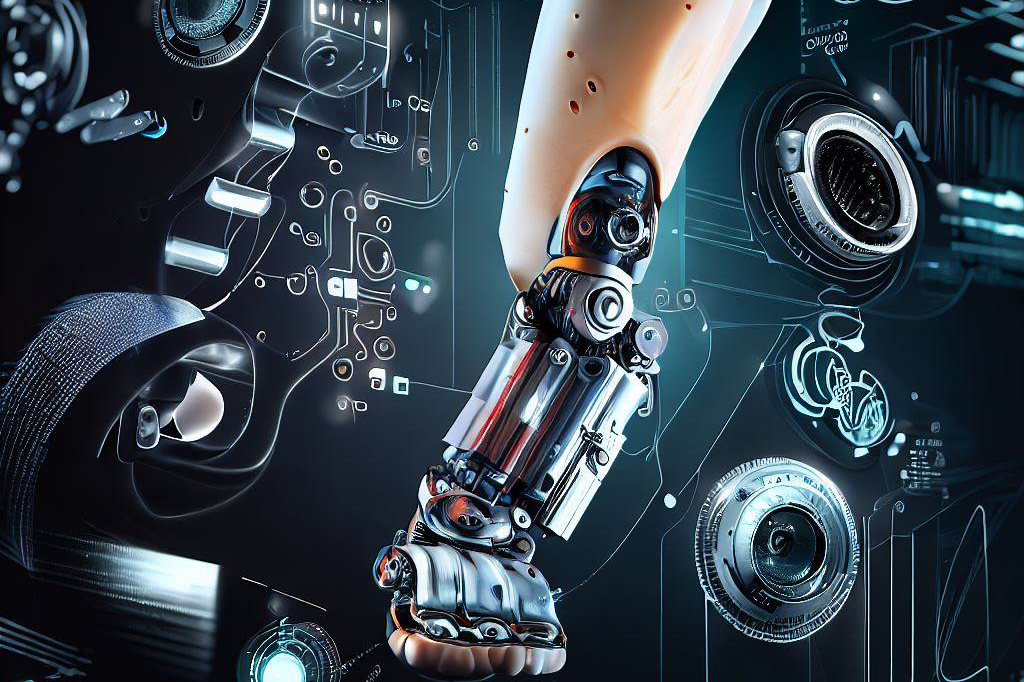
Real-time data analysis is a cutting-edge technology that has the potential to revolutionize the performance of prosthetic limbs. In essence, it involves using sophisticated sensors and computer algorithms to collect, process, and interpret real-time data from the prosthetic limb and its surrounding environment. This data can then be used to adjust the limb’s movements and responses in real time, improving its functionality and efficiency.
One of the primary applications of real-time data analysis in prosthetics is feedback control. By constantly monitoring sensor input from the limb and its environment, AI algorithms can make instant adjustments to improve precision, stability, and overall control.
For example, an AI-powered prosthetic leg might use sensors to detect changes in terrain or incline, and adjust its gait accordingly for improved balance and stability. Another key benefit of real-time data analysis in prosthetics is enhanced performance.
By analyzing thousands or even millions of data points per second, AI algorithms can quickly identify patterns or anomalies that would be missed by human observation alone. This means that a well-designed AI system could quickly detect issues like wear-and-tear on components or suboptimal movement patterns before they become serious problems.
Examples of Real-Time Data Analysis Integrated Prosthetics
There are already several promising examples of real-time data analysis being used to improve prosthetic function:
– The “i-Limb” hand prosthesis uses machine learning algorithms to learn how an individual user moves their remaining fingers. It then uses this information to make more accurate predictions about how they want their prosthesis’s fingers to move in response.
– The “DEKA Arm” is a modular prosthetic arm that uses advanced sensors to detect muscle contractions in the user’s residual limb. These signals are then translated into specific movements for each joint in the arm.
– Another exciting development is the use of sensors integrated into the prosthetic socket itself. By measuring pressure and temperature in real-time, this type of system can detect when a prosthesis is fitting too tightly or causing discomfort, and make adjustments automatically.
Overall, real-time data analysis has enormous potential to improve the functionality of prosthetic limbs. As technology continues to advance and more sophisticated algorithms are developed, we can expect to see even greater gains in precision, efficiency, and user satisfaction.
Predictive Maintenance: Proactive Care for Prosthetic Limbs
Predictive maintenance is the practice of using data analysis and machine learning to predict when maintenance will be needed on a device, so that repairs can be made proactively, before the device fails. This approach is being used increasingly in manufacturing and other industries, and it has great potential for prosthetic limbs as well.
By monitoring the usage patterns and wear-and-tear on prosthetics, predictive maintenance can help to reduce downtime and increase reliability. One key application of predictive maintenance in prosthetics is in monitoring the mechanical components that make up the limb.
For example, sensors could be set up to track movement patterns over time, which would allow a machine learning algorithm to identify when parts may be wearing down or failing. This would enable technicians to proactively replace these parts before they cause problems for the user.
The Benefits of Predictive Maintenance
The benefits of predictive maintenance for prosthetic limbs are significant. By detecting problems early on, technicians can address them proactively rather than reactively.
This helps to reduce downtime for users who rely on their prosthetics every day. Moreover, by addressing issues early on, repairs can often be made more easily and at a lower cost than if waiting until a catastrophic failure occurs.
Another advantage of predictive maintenance is that it enables technicians to plan ahead for repairs or replacements. If data shows that a particular component tends to wear out after a certain amount of usage time or activity level, then technicians can plan accordingly and have replacement parts ready when needed.
Examples of Predictive Maintenance Integrated Prosthetics
While predictive maintenance is still a fairly new concept in the field of prosthetic limbs, there are already some notable examples emerging. For example, one company has developed an AI-powered sensor system that monitors activity levels in real-time and calculates how much wear-and-tear each component of the prosthetic limb is experiencing.
This data is then used to predict when maintenance will be needed, and technicians can use it to schedule repairs proactively. Another company has developed a machine learning algorithm that can analyze data from sensors in a prosthetic limb to identify patterns of usage and predict when certain components will need maintenance or replacement.
This approach enables technicians to address issues before they become serious, reducing downtime and improving reliability for users. Predictive maintenance has great potential for improving the functionality of prosthetic limbs.
By monitoring usage patterns and identifying potential issues before they cause problems, this approach can help reduce downtime and increase reliability for users. As technology continues to evolve in this area, we are likely to see more innovative applications of predictive maintenance in prosthetics.
Final Thoughts
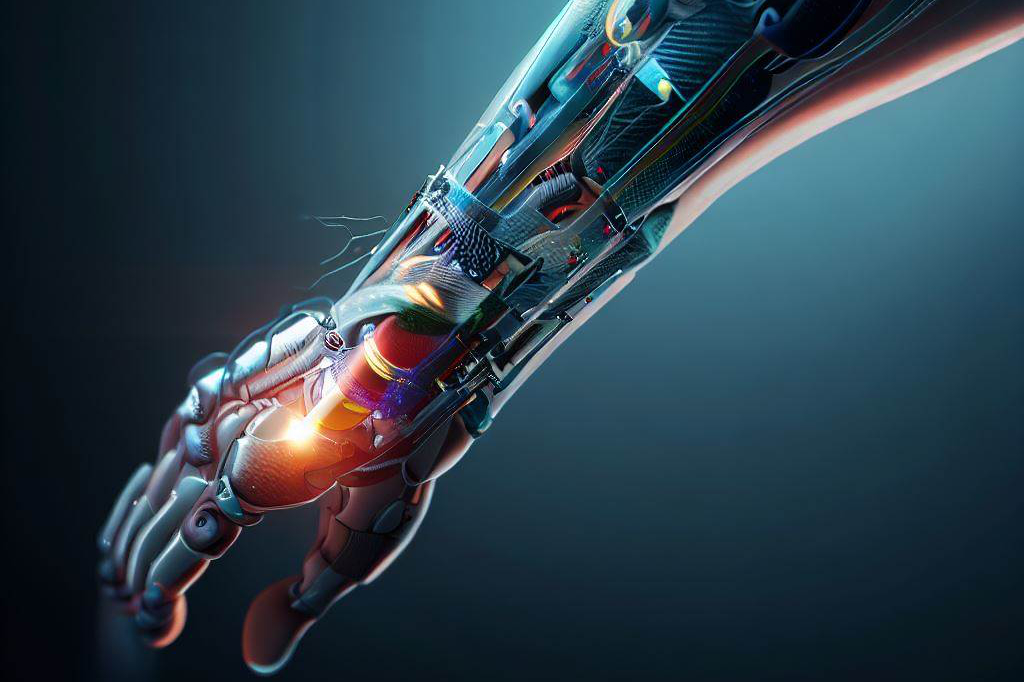
The integration of AI technology in prosthetic limbs has the potential to revolutionize the lives of millions of amputees worldwide. By combining sensor integration, machine learning algorithms, real-time data analysis, and predictive maintenance techniques, prosthetics can become more personalized and user-friendly than ever before.
Recap on how AI can improve functionality on Prosthetic Limbs
Sensors integrated into prosthetic limbs can provide real-time feedback to users, making it easier for them to control their movements. This means that amputees will be able to move their prosthetics more precisely and with greater ease than ever before.
Integrating machine learning algorithms into prosthetics will allow for personalized movements and adjustments based on individual needs. The algorithms will learn from the user’s behavior and adjust accordingly over time.
This means that users will have a more natural experience when using their prosthetics. Real-time data analysis can help identify problems with a prosthetic limb before they become serious issues.
This means that users will be able to avoid downtime caused by repairs or replacements. Predictive maintenance techniques can further reduce downtime by anticipating issues before they occur.
The potential impact
The potential impact of AI-integrated prosthetics is enormous. Not only will amputees have access to more advanced technology than ever before, but they will also be able to live fuller and more independent lives thanks to improved functionality. With better control over their movements, amputees may even be able to participate in activities that were previously impossible for them.
Additonally, as this technology becomes more widely adopted it may become less expensive which would increase accessability for those who cannot afford current models of advanced prosthesis. The future is bright for AI and prosthetic limbs.
With continued research and investment, we may see even greater advancements in the coming years. We look forward to a world where everyone has access to the tools they need to live their best lives, regardless of physical ability.
FAQs
– Q: What are the limitations of traditional prosthetic limbs?
– A: Traditional prosthetic limbs have limitations that restrict amputees from regaining complete functionality. They are typically passive devices that move in response to muscular signals transmitted by electrodes on the skin. This results in limited mobility and functionality, relying solely on muscle movements to control the limb.
– Q: How can AI improve prosthetic limbs?
– A: AI can significantly improve prosthetic limbs by enhancing their functionality and mobility. Integration of sensors allows for better control and feedback, detecting muscle movement, pressure, and temperature changes. Machine learning algorithms personalize movements and adjustments based on individual needs, while real-time data analysis optimizes performance. Predictive maintenance reduces downtime by predicting component failures and scheduling maintenance.
– Q: What is the importance of improved functionality for amputees?
– A: Improved functionality in prosthetic limbs is crucial for amputees as it allows them to regain independence and participate more fully in daily life. It enables them to perform essential tasks and return to the workforce if they choose. Improved functionality also contributes to better mental health outcomes by boosting confidence and independence.
– Q: How do sensors enhance prosthetic limb functionality?
– A: Sensors integrated into prosthetic limbs provide better control and feedback. They detect muscle movement, pressure, and temperature changes in the residual limb, allowing AI to make real-time adjustments to the prosthetic’s movements. Sensors also enable improved safety features, such as adjusting the foot’s angle to prevent tripping or falling.
– Q: What is the role of machine learning algorithms in prosthetic limbs?
– A: Machine learning algorithms analyze user data and adapt to create personalized movements and adjustments. By learning from individual inputs, algorithms can improve accuracy, precision, and effectiveness. This allows users to perform tasks more easily and with greater control, enhancing their overall experience with the prosthetic limb.
These FAQs provide a basic understanding of how AI can improve prosthetic limbs, the limitations of traditional prosthetics, the importance of improved functionality, and the role of sensors and machine learning algorithms. For more information and specific details, please consult with a professional
TL;DR…
– 💡 Traditional prosthetic limbs have limitations that restrict amputees from regaining complete functionality. They are typically passive devices that move in response to muscular signals transmitted by electrodes on the skin.
– 💡 AI can significantly improve prosthetic limbs by enhancing their functionality and mobility. Integration of sensors allows for better control and feedback, detecting muscle movement, pressure, and temperature changes. Machine learning algorithms personalize movements and adjustments based on individual needs, while real-time data analysis optimizes performance. Predictive maintenance reduces downtime by predicting component failures and scheduling maintenance.
– 💡 Improved functionality in prosthetic limbs is crucial for amputees as it allows them to regain independence and participate more fully in daily life. It enables them to perform essential tasks and return to the workforce if they choose. Improved functionality also contributes to better mental health outcomes by boosting confidence and independence.
– 💡 Sensors integrated into prosthetic limbs provide better control and feedback. They detect muscle movement, pressure, and temperature changes in the residual limb, allowing AI to make real-time adjustments to the prosthetic’s movements. Sensors also enable improved safety features, such as adjusting the foot’s angle to prevent tripping or falling.
– 💡 Machine learning algorithms analyze user data and adapt to create personalized movements and adjustments. By learning from individual inputs, algorithms can improve accuracy, precision, and effectiveness. This allows users to perform tasks more easily and with greater control, enhancing their overall experience with the prosthetic limb.

C M, a seasoned editor, journalist, and consultant, is deeply fascinated by the convergence of technology, space, and the future of humanity.
With a particular interest in transhumanism, futurology, and the philosophical and ethical dimensions of these domains, C M serves as the lead contributor to TranscendSphere and SpaceSpotlight.
When not penning insightful articles on these rapidly evolving fields, C M indulges in their love for podcasts and books, proudly embracing their status as a ‘Happy Nerd Extraordinaire!’

